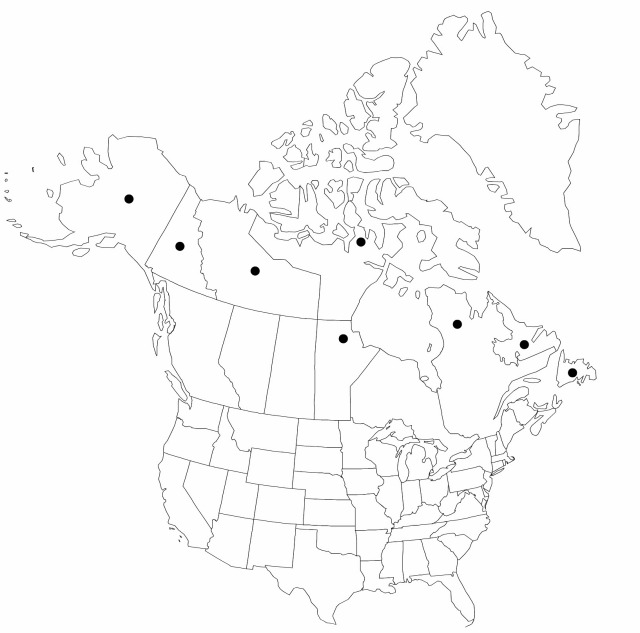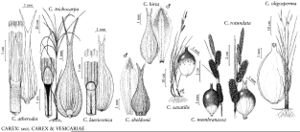Difference between revisions of "Carex rotundata"
Kongl. Vetensk. Acad. Nya Handl. 24: 153. 1803.
FNA>Volume Importer |
FNA>Volume Importer |
(No difference)
| |
Revision as of 21:12, 16 December 2019
Plants cespitose; rhizomes long. Culms round in cross section, 17–48 cm, smooth distally. Leaves: basal sheaths brown, rarely red tinged; ligules shorter than wide; blades mid to dark green, wiry, filiform-involute, circular in cross section, 1.3–3(–3.2) mm wide, glabrous. Inflorescences 2–14 cm; proximal bract 0.7–10(–16) cm, shorter than or equaling inflorescence; proximal 1–2(–3) spikes pistillate, erect; terminal 1–2(–3) spikes staminate. Pistillate scales ovate, 2.4–4 × 1.3–2.1 mm, as long as or shorter than perigynia, margins entire, apex obtuse or acute, awnless. Perigynia spreading to reflexed, obscurely few-veined, veins not extending to beak, elliptic, 2.5–3.9(–4.2) × 1.4–2.3 mm, apex abruptly contracted, membranaceous; beak 0.4–0.8(–0.9) mm, obscurely bidentulate, smooth, teeth straight, to 0.3 mm. Stigmas 3. Achenes yellow, trigonous, smooth. 2n = 80.
Phenology: Fruiting Jul–Aug.
Habitat: Fens, bogs, wet tundra
Elevation: 0–900 m
Distribution

Man., Nfld. and Labr., N.W.T., Que., Yukon, Alaska, Eurasia.
Discussion
Hybrids between Carex rotundata and C. utriculata (= C. ×paludivagans Drury) are known from the Kuskokwim River Valley and Kenai Peninsula of Alaska (W. H. Drury Jr. 1956b; B. A. Ford et al. 1993). Althouth the hybrids can produce hardened achenes, the pollen is sterile. Hybrid plants are intermediate morphologically between the putative parents and possess no unique characters that distinguish them as distinct taxonomic entities (B. A. Ford et al. 1993).
Selected References
None.
